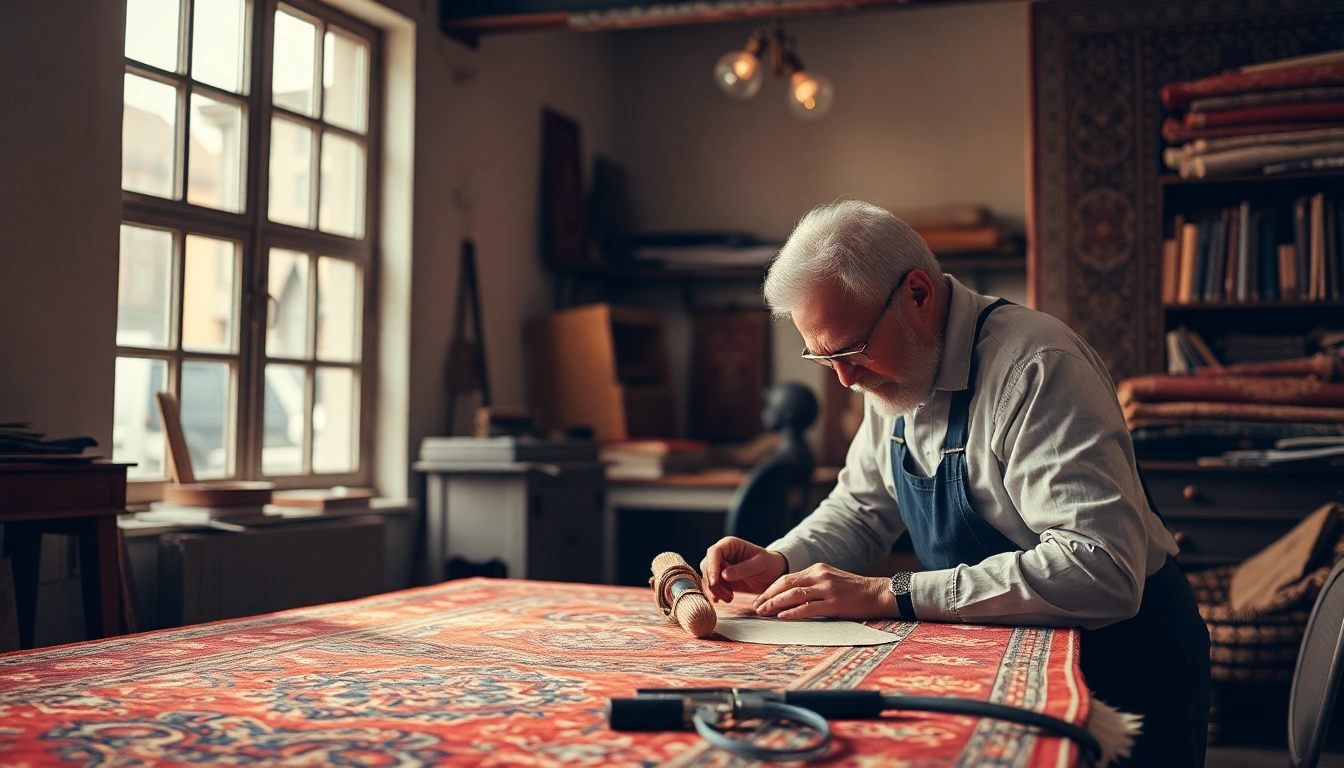Understanding the Importance of Restauro Tappeti Milano
Why Professional Restauro Matters
When it comes to maintaining the beauty and longevity of your valuable carpets, professional restauro (restoration) plays an essential role. Unlike DIY cleaning or superficial repairs, professional restoration involves a meticulous process carried out by skilled artisans who specialize in the preservation of intricate textiles. In a city like Milan, where cultural heritage and craftsmanship are highly valued, entrusting your carpets to expert restorers ensures that your investment retains its original charm and durability. Proper restoration can address damages caused by age, wear, stains, or accidental injuries, transforming a worn-out piece into a restored masterpiece.
Choosing expert Restauro Tappeti milano services guarantees that every stage—from cleaning to repair—is executed with precision, respecting the carpet’s unique materials and techniques. The ultimate goal is to revive the carpet’s aesthetics while preserving its historical or artistic significance, offering a way to enjoy your piece for decades more.
Historical Value and Preservation
Tappeti (carpets) often hold historical, cultural, and artistic significance, especially when dealing with antique, Persian, or Oriental pieces. Proper restoration is vital for conservation, as it prevents further deterioration and retains the original craftsmanship that makes these rugs unique. Many antique carpets are centuries old, and their fibers, dyes, and weaving patterns require specialized care to avoid irreversible damage.
In Milan, restoration studios employ techniques that adhere to conservation standards, including delicate dye retouching, fiber stabilization, and meticulous knot repair. Such efforts not only preserve the aesthetic value but also protect the provenance and cultural significance of your carpets, transforming them into timeless pieces that can be passed down through generations.
Common Damages and Restoration Needs
Carpets often suffer from various damages over time, which may include:
- Physical tears or frayed edges
- Bluing or fading of dyes
- Burn marks, stains from spills, or pet damage
- Fringe deterioration or missing fibers
- Structural deformities such as sagging or unevenness
Restoration addresses each of these issues through specialized techniques such as patch repair, dye restoration, and fiber reweaving. Recognizing these damages early allows for timely intervention, preventing minor issues from escalating into irreparable harm.
Step-by-Step Guide to Restauro Tappeti Milano
Initial Assessment and Damage Documentation
The restoration process begins with a comprehensive evaluation undertaken by certified specialists. This assessment involves a detailed visual examination, often supported by magnification and lighting tools, to identify all damages—be they structural, color-related, or surface-level. High-resolution photographs and written records are kept for future reference, ensuring transparency and proper documentation. This step minimizes surprises downstream and allows the restorer to develop an appropriate treatment plan tailored specifically to your carpet’s needs.
Cleaning and Surface Preparation Techniques
Before any repair, thorough cleaning is imperative. Experts employ gentle yet effective cleaning methods such as hand-washing with pH-neutral solutions, dry cleaning, or specialized vacuums designed for delicate fibers. Removing dirt, oils, and surface stains not only enhances the visual appeal but also ensures that dyes and fibers respond predictably during subsequent restoration stages. Proper cleaning also reveals underlying damages that might be hidden beneath layers of dirt, facilitating accurate repairs.
Preparation may include stabilizing loose fibers, consolidating weakened areas with conservation adhesives, and carefully removing superficial stains or residues that could interfere with the dyeing or reweaving processes.
Reparations, Dyeing, and Final Restoration
The core of the restoration involves repairing physical damages such as tears, holes, or frayed edges. This is achieved through skillful reweaving using similar fibers, often sourced from the same region or era for authenticity. Color restoration, including dye touch-ups, is performed with natural or synthetic dyes that match the original dyes in hue and aging properties, ensuring seamless integration.
Finally, experts undertake surface finishing, such as fringe repairs and fiber flattening, to restore the carpet’s original appearance and feel. Once all repairs are completed, a protective treatment may be applied to safeguard against future damage and dirt accumulation.
Choosing the Right Restauro Service in Milan
Qualifications and Experience to Look For
In selecting a restoration service, prioritize artisans with proven expertise in handling antique and Oriental carpets. Look for certifications from recognized conservation associations or specific training in textile restoration. An impressive portfolio showcasing diverse restoration projects, along with client testimonials, provides insight into their professionalism and quality of work.
Cost Estimates and Value Considerations
Restoration costs vary depending on the extent of damage, carpet size, and the complexity of repairs. Professional services typically range from a few hundred to several thousand euros. While budget considerations are important, investing in experienced artisans ensures longevity and authenticity, ultimately preserving your carpet’s value. To avoid hidden costs, request detailed quotes and inquire about any additional treatments or materials involved.
Customer Reviews and Portfolio Insights
Research customer feedback and examine before-and-after photos of previous restorations. Reputable providers often display comprehensive portfolios highlighting their craftsmanship and attention to detail. Personal consultations can also provide clarity on the approach, expected results, and timeline.
Cost Factors and Budgeting for Restauro Tappeti Milano
Average Pricing Ranges and What Influences Costs
Typical prices for carpet restoration in Milan fluctuate based on several factors:
- The size and complexity of the carpet (larger and more intricate designs cost more)
- The type of damage (minor stains vs. extensive reweaving)
- The age and rarity of the piece (antique or collectible items may require specialized techniques)
- The materials needed for repair, such as authentic fibers and dyes
On average, basic repairs may start from around €200-€500, while comprehensive restorations of antique pieces could range from €1,000 to over €5,000. Always seek personalized quotes for accurate budgeting.
How to Get Accurate Quotes
To obtain precise estimates, provide restorers with detailed photographs, dimensions, and descriptions of damages. Legal and insurance considerations also benefit from formal documentation of the condition before restoration. Consulting multiple providers and comparing their proposals ensures value for money and helps you select the most qualified team.
Maintaining Value and Longevity of Restored Tappeti
Post-restoration care influences how well your carpet maintains its condition. Proper cleaning, protection from direct sunlight, and gentle handling extend the life of the restoration efforts, preserving both aesthetic appeal and market value.
Enhancing and Maintaining Restored Tappeti
Proper Care and Cleaning Post-Restoration
After restoration, adopting regular maintenance routines is crucial. Vacuuming with a soft brush attachment prevents dust accumulation, while occasional professional cleaning refreshes the fibers. Avoid harsh chemical cleaners or aggressive scrubbing, which can undo restoration work and damage fibers.
Long-Term Preservation Tips
- Protect the carpet from direct sunlight to prevent dye fading
- Use padding or underlays to reduce wear and friction
- Address spills immediately with blotting techniques rather than rubbing
- Store carpets properly during off-season periods in a dry, climate-controlled environment
When to Consider Future Restauro
Regular inspections help identify signs of deterioration early, such as fraying, fading, or pest damage. When minor issues emerge, prompt maintenance and minor repairs can prevent costly, extensive restorations later. Planning periodic professional evaluations ensures your carpets remain pristine and culturally preserved over the years.



